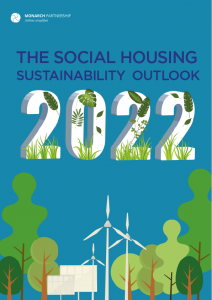Keep on top of the latest energy regulation updates
As you may have noticed, April has brought with it a deluge of energy regulation updates. A confusing web of acronyms with annexed numbers all struck at once, and you are forgiven for not being entirely clear on which ones mean what. We have simplified these so you can be aware of the changes set to affect you the most. The good news is, it’s not the catastrophe it first appears, with a little bit of care and attention you’re able to avoid heavy charges, and even benefit from them by making savings.
1. DCP228
2. DCP161
3. P272
4. P350
5. MEES
DCP228
This was designed to even out the red, amber and green time of use tariffs. This means that those half hourly metered companies predominantly using power during peak periods may find themselves with lower bills, and conversely those generating power overnight, for example, will find the opposite due to the rise in red and amber band prices. In short: peak demand avoidance measures are less rewarded.
For more information on DCP228, read our full article on it, and find out how you can take advantage of the changes and make savings.
DCP161
To back up the DCP228, the DCP161 also came into force on April 1st. Where the DCP228 endeavours to even out the red, amber, and green DUoS price bands, the DCP161 relates to the penalty charges incurred when half-hourly metered companies exceed their assigned available capacity. Prior to this, any excess usage was paid at the standard rate, but the DCP161 ensures that charges can be up to three times higher than the standard rate. This means that if the consumer sets the capacity level much lower than their maximum they may be punished heavily for it.
With detailed Energy Monitoring and Targeting, you can discover areas in which you can easily save money and therefore remain below your capacity level. To enquire about these services contact us.
P272
The introduction of P272 last year meant that all non-half-hourly meters in profile classes 05-08 underwent a mandatory conversion to half-hourly meters. A year on, and the companies who underwent this change may still be suffering from a lack of clarity surrounding their available capacity. Given that the transition was not all that long ago, certainly for businesses that lack the time or resources to look into it, such companies may be vulnerable to the DCP161 regulation change.
Your available capacity can be adjusted according to average usage and the extent of maximum usage. We are able to help you measure this in great detail and from that deduce the optimum capacity level to save you the most money. To enquire about these services contact us.
For more info on this, and other energy regulation updates, visit: www.elexon.co.uk/mod-proposal/p272-mandatory-half-hourly-settlement-for-profile-classes-5-8/
P350
The P350 Balancing and Settlement Code has been modified to localise transmission loss pricing. In simpler terms, the charges incurred for power transmission losses are now specific to location and season, something which was raised by the National Grid as a result of the Competition and Market Authority’s ‘Locational Pricing Order’, issued on 14 December 2016.
For more info on this, and other energy regulation updates, visit: www.elexon.co.uk/mod-proposal/p350/
MEES
Minimum Energy Efficiency Standards now state that public and private sector non-domestic landlords cannot grant a tenancy to new or existing tenants if their property has an EPC rating of band F or G, and from 2023 this will change to anything below the E band. Failing this, penalties of up to £160,000 are on hand.
Find out how a specialist energy auditor can help you achieve a higher rating on your Energy Performance Certificate. Contact us.
Our connected services:















